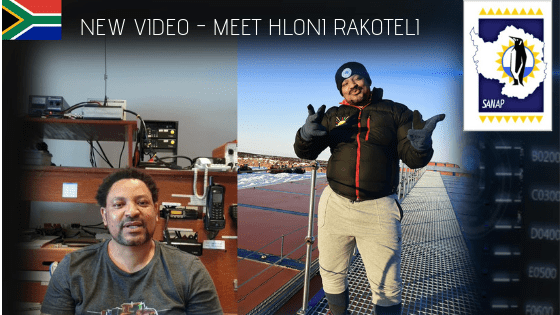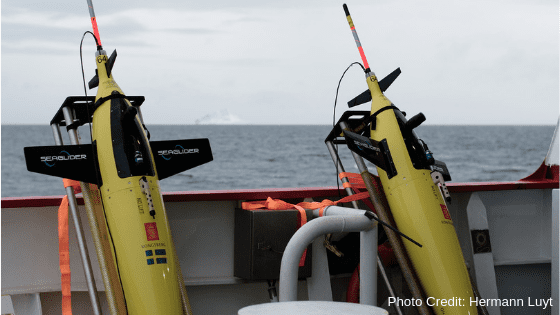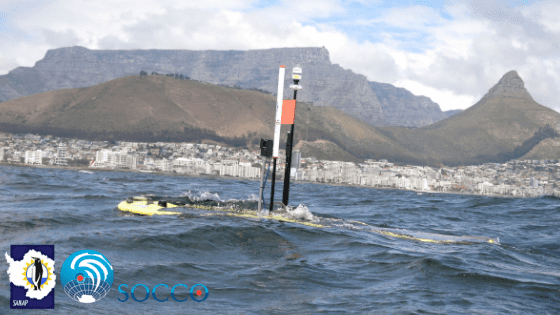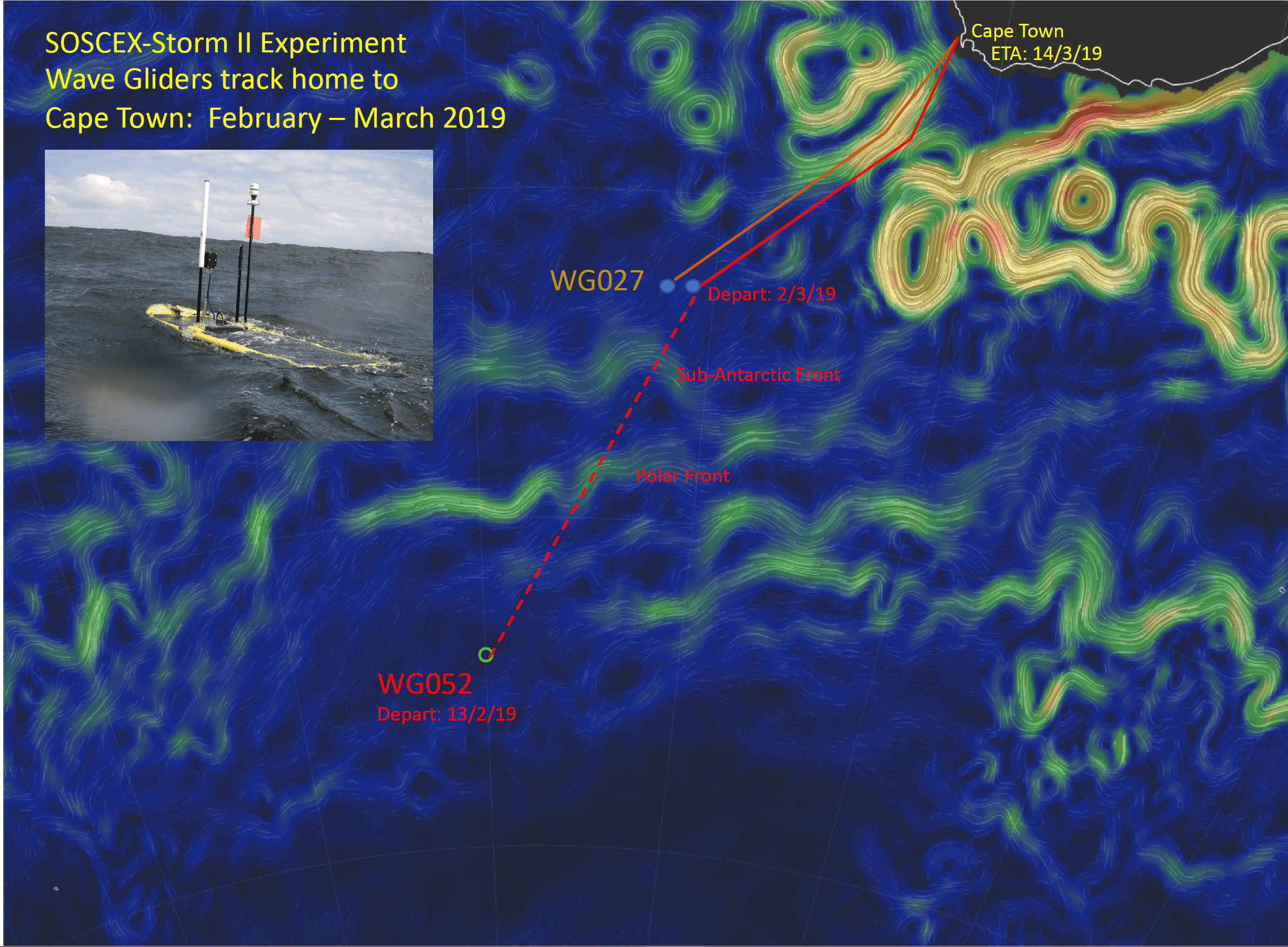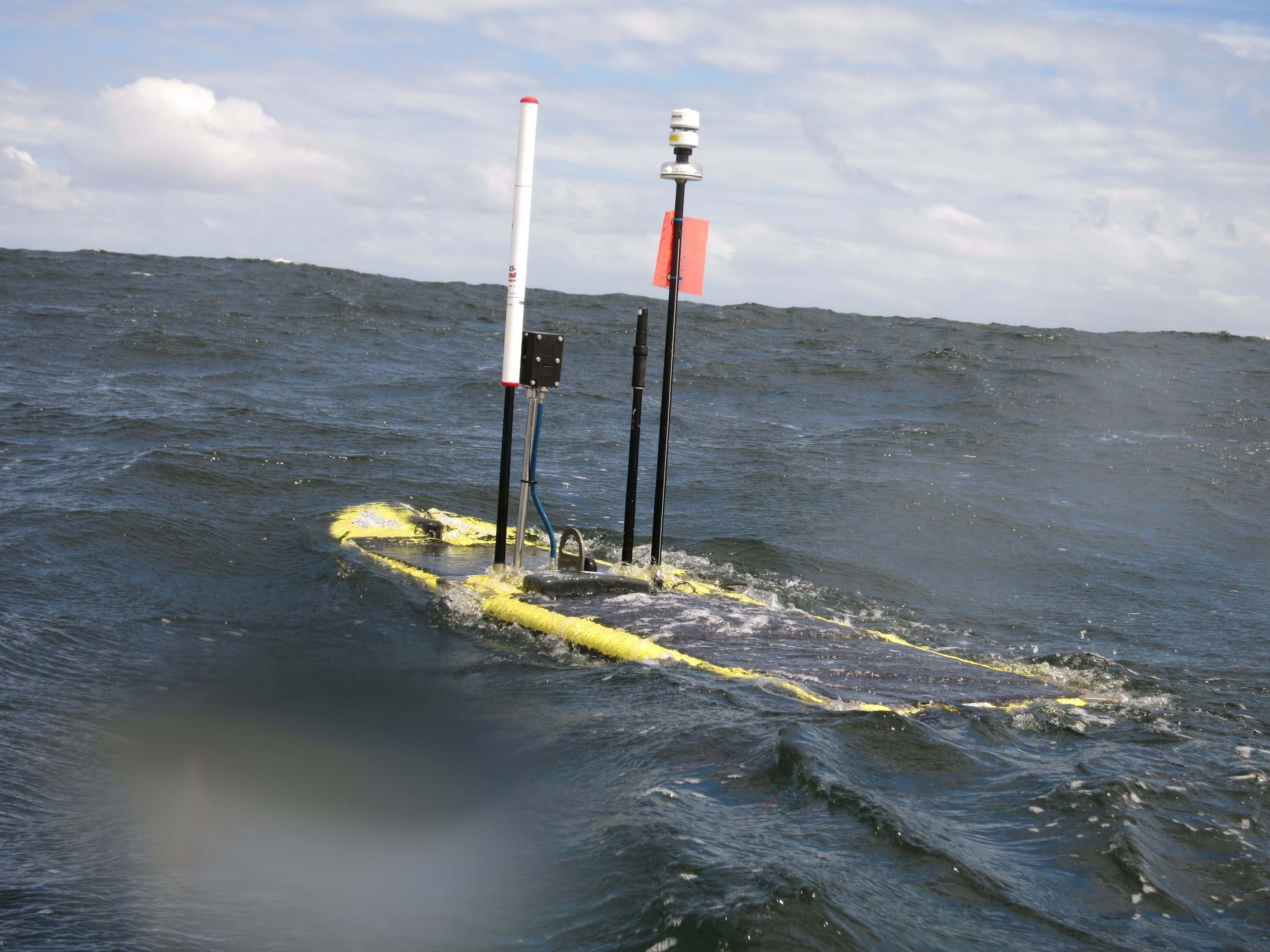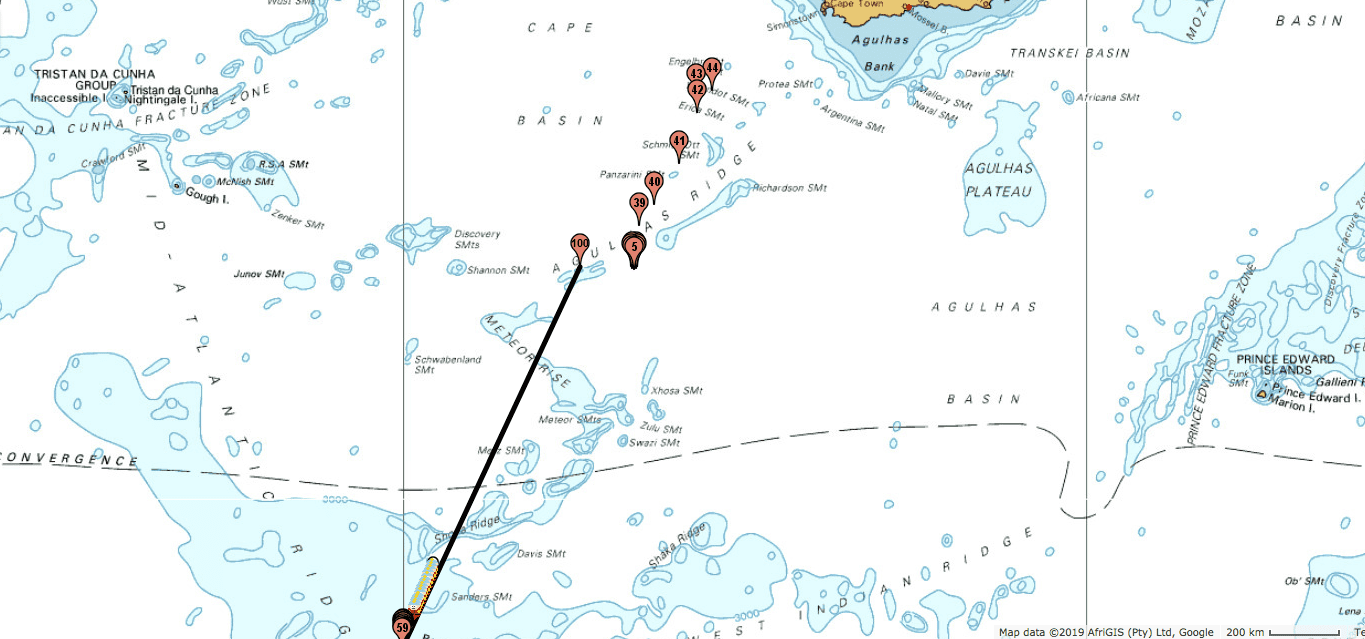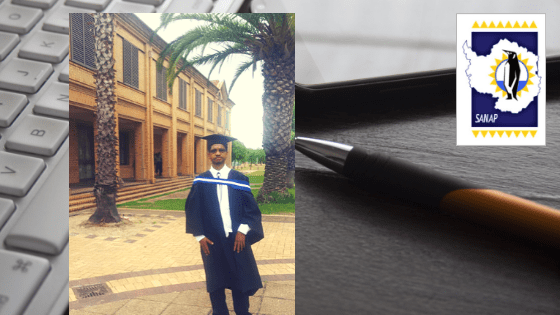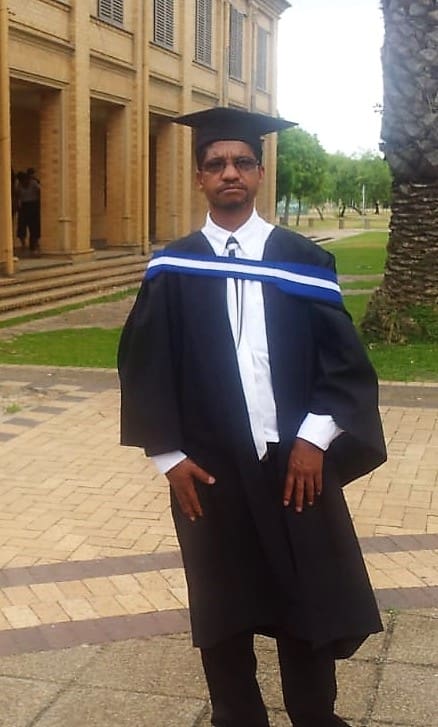
by Fishgate@sanap | Mar 12, 2019 | Antarctica, News, Newsletters, Overwintering Team, SA Agulhas II, SANAE, SANAP, Southern Ocean, Team member
Meet the Communications Engineer of the 57th South African National Antarctic Expedition Team – Hloni Rakoteli. This is not the first time Hloni heads home on the S.A Agulhas II from an overwintering expedition, his first expedition was on Gough Island as part of the 61st Gough Island Overwintering Team (Gough61 team photo). Get to know Hloni a bit better, before watching the video, by downloading the June Edition of the SANAE57 team newsletter.

Excerpt of SANAE57’s first team newsletter – December 2017 (Click here to view this newsletter)
VIDEO
https://www.facebook.com/AntarcticLegacySA/videos/818243898526390/
This team is heading home on the S.A. Agulhas II, currently sailing through the roaring 40’s (now at 43°South). Track the S.A. Agulhas II by clicking on the icon below.

Track the S.A. Agulhas II
Anché Louw, Antarctic Legacy of South Africa, 12 March 2019

by Fishgate@sanap | Mar 7, 2019 | Antarctica, News, Research, SA Agulhas II, SANAP, Science, Southern Ocean, sub-Antarctic
The S.A. Agulhas II is now on its homeward journey having finished all logistical and scientific work at SANAE and in the Weddell Sea (track the ship here). The work is not yet over for all aboard, however. Scientists from the University of Cape Town (UCT), the Council of Scientific and Industrial Research (CSIR) and the South African Weather Service (SAWS) continue to collect oceanographic and meteorological data. UCT and CSIR are both sampling seawater as the ship sails, measuring chlorophyll, nutrients, ammonium and phytoplankton community composition, to name a few.
Over and above this, CSIR—more particularly, CSIR SOCCO—and Martin Mohrmann of the University of Gothenburg and ROAM-MIZ deployed oceanographic instruments on the voyage south to Antarctica (see photos below). CSIR SOCCO, or the Southern Ocean Carbon & Climate Observatory, is a South African research programme focused on the Southern Ocean. ROAM-MIZ, according to their website, “is a multi-institutional initiative to observe the full seasonal cycle of the upper ocean in the marginal ice zone near the Greenwich Meridian”. CSIR SOCCO deployed two wave gliders, a Seaglider and a Slocum glider. ROAM-MIZ deployed two Seagliders and a Sailbuoy, christened SB Kringla. These instruments continuously record oceanographic data while they move through the water. The wave gliders and the Sailbuoy remain at the surface, harnessing wave and wind power, respectively, to propel them through the water. The Seagliders and Slocum glider alter their buoyancy to dive and sample sea water during their journeys to the deeps (deep parts of the ocean) and back to the surface. All these vehicles transmit their data to satellites at regular intervals or when they surface after a dive.
Deployment of Gliders
With the S.A. Agulhas II now making for home, the time has come to recover these instruments in order that they can be serviced and used again in future deployments. The wave gliders, in a true feat of engineering, are being piloted home to Cape Town. This is due to reducing sunlight available for the solar panels of the southernmost glider as the receding summer light wanes at these high latitudes. This will entail a journey of 1200 km and 2500 km for the respective wave gliders (click here for the update on the position of the gliders). Two Seagliders, the Slocum glider and the Sailbuoy will be recovered on the voyage home. The third Seaglider is to be recovered by another vessel, the Norwegian RV Kronprins Haakon, sailing from Punta Arenas in Chile.
On the 1st of March, the Sailbuoy and a ROAM-MIZ Seaglider were both safely recovered in fair weather at 60°S 0°E. The speed and success of the recovery were entirely down to the skill of the S.A. Agulhas II’s crew and the prevailing calm weather. Next, the Slocum glider will be recovered at 54°S 0°E and then CSIR SOCCO’s remaining buoyancy glider at 43°S 8°E. The S.A. Agulhas II is now making for 54°S 0°E after having sailed to South Thule and South Georgia for SAWS deployments and commitments.
Retrieval of Gliders
For more information on CSIR’s SOCCO programme, click here and for further information on ROAM-MIZ, click here.
Cover Photo: ROAM-MIZ’s two buoyancy gliders making satellite contact in preparation for deployment.
Written by: Hermann Luyt, Oceanography, University of Cape Town
Edited by: Anché Louw, Antarctic Legacy of South Africa, 07 March 2019
Photo Credit (all): Hermann Luyt

by Fishgate@sanap | Mar 6, 2019 | Current Event, News, Research, SANAP, Science, Southern Ocean
SOSCEX-Storm II Experiment Wave Gliders heading to Cape Town from the Antarctic waters
Following up on the story of the our Liquid Robotics Wavegliders returning home to Cape Town from the Southern Ocean (click here) we have now completed the first half of the journey. Waveglider WG052 will arrive at its intermediate waypoint 43°S 9°E on Saturday 2nd March. It has completed the first 1200km of its journey in 17 days at an average of 70km per day during which it sailed through 3 storms and crossed both the Polar and Sub-Antarctic fronts (see photo below).

On Sunday 3rd March WG052 will meet up with its twin WG027 that has been making its own CO2 and physics measurements at our long term observation station SAZ-1 since early December 2018. They will return together in the second 1200km stretch of sub-polar and sub-tropical waters but separated by about 50 – 100km to test some ideas about the correlations length scales for pCO2. Both units continue to provide almost real time observations of ocean physics and CO2. You will see from the attached pic (earth.nullschool.net), which is derived from almost real time satellite observations-based surface ocean circulation product OSCAR of the mesoscale features around the south of Africa, that we are aiming to use one of these “jets” to propel both gliders towards Cape Town across the turbulent cauldron west of the Agulhas current retroflection. It shows very nicely how the ocean is not made up of large homogeneous currents but a series of high speed jets and eddies. We are exploring how the interaction of storms with these features influence the seasonal variability and ultimately the climate sensitivity of the air – sea fluxes of CO2 in the Southern Ocean.
– Dr. Pedro M. Scheel Monteiro & SOCCO & SA-RobOTIC team, 01 March 2019 (posted 06 March 2019)

by Fishgate@sanap | Feb 18, 2019 | News, Research, SA Agulhas II, SANAP, Science, Southern Ocean
SOCCO: Southern Ocean Carbon & Climate Observatory


SANAP Project name: How storm characteristics in the Southern Ocean influence inter annual variability of CO2 fluxes
This summer SOCCO conducted the second SOSCEX-Storm glider-based experiment in the Southern Ocean as part of its 3 year science plan. We deployed two carbon wave gliders equipped with our SA-RobOTIC designed and built and pCO2 sensors, which have behaved flawlessly under the most dire conditions that the Southern Ocean could throw at them, which included weekly storms of 80-140km/h winds, waves of 10+m, snow storms and sea temperatures of -1 to 2°C. During this 2 month period they have taken over 3000 pCO2, pH, temperature and salinity observations. It was a rigorous test for the pCO2 sensors, which have a design feature that is specifically made to cope with Southern Ocean storms. It can be submerged by a wave which will mean that it taken a bit of water through the air intake but when the detectors pick this up it uses it pressurized gas to expel the moisture and continues to provide high quality data. This deployment was a significant achievement for our SA-RobOTIC engineering and an indication of how our expertise to operate in these conditions has matured and become globally recognized. This deployment was important for two reasons, it allowed us to start to examine the role of storms in driving the carbon – climate feedback in the Southern Ocean and it is a preparation phase for the SCALE experiment that starts in July 2019. The hypothesis, which is core to our NRF-SANAP and DST funding, that we are exploring is that climate-linked changes in storm characteristics will play an important role in the century scale carbon – climate feedbacks. Ocean robots and high precision sensors make this science possible.
We have however encountered a problem with the glider deployed at 54°S which is, that while it generated enough power during the peak of summer with nearly 24 hours of daylight, this is no longer the case in February with the sun setting for increasingly long periods – night is arriving in Antarctica. Wave gliders use solar panels to power the sensors. The second glider was deployed at 43°S where there is still plenty of sunlight. In a normal year the gliders would have been picked up by the S.A. Agulhas II coming back from SANAE at about this time but this year the ship is coming back nearly 5 weeks later because it is chartered by a British team to find the Endurance, Shackleton’s ship. As a matter of interest we are collaborating with some of our aeronautical engineering colleagues at CHPC (Centre for High Performance Computing) to develop an underwater power generator to enable us to make winter (no sunlight) deployments in July 2019.
For this reason we have made the decision to pilot both wave gliders home to Cape Town without the ship. This will be a journey of 2500km for WG-052 and 1200km for WG-027. We think this has the added advantage of reducing the risk of damage during retrieval by the ship, which has happened a few times due to the normally difficult conditions on retrieval. So, wave glider 052 has now left its long term observation position at 54°S on the prime meridian and is heading home towards wave glider 027 which is at 43°S. It is travelling at a speed of about 100km per day. The sensors are all working and we will take advantage of this opportunity to conduct an experiment that needs 2 gliders while they are on the way home. We expect them home in a month, mid-March and we will pick them up in Granger Bay in front of our SA-RobOTIC centre.

Route of the WG052 and 027 gliders (2019)
The wave gliders were paired with a buoyancy glider each that are making observations down the water column to 1000m 4 – 5 times a day. This pairing of wave gliders and buoyancy gliders is a SOCCO innovation under the SOSCEX series of experiments since 2013/14. The two buoyancy gliders will remain on station waiting for ship retrieval in mid-March.
– Dr. Pedro M. Scheel Monteiro & SOCCO & SA-RobOTIC team, 18 February 2019
SOCCO on Social Media
http://socco.org.za/news/riding-the-waves-home/

by Fishgate@sanap | Dec 17, 2018 | News, SANAP
Every year students within the South African National Antarctic Programme graduates (click here), but this year it is not only students within the programme who graduated with a new degree.
Errol Julies, Engineering Technician at the Department of Environmental Affairs (DEA) with a BTech (baccalaureus technologiae) Electrical Engineering background, graduated last week with a BTech in Project Management. Congratulations Errol!
Errol’s main duty within the South African National Antarctic Programme is ensuring a stable communication network to the various South African Antarctic and sub-Antarctic research stations (Marion Island, Gough Island and SANAE IV). This is a great responsibility.
Errol wants to further his education as he feels that: “the fact that SANAP produces world-class researchers and scientific articles, we need to path the way and create a solid foundation for future scientists”. He also mentions that: “the only way to ensure rock solid foundations is, for those involved in the management of the programme, to always be knowledgeable of new development”.
ALSA also received a special message from Gough Island to Errol:
G64 just want to say congratulations to Errol and a special thank you for coordinating that our parcels from home made it onto the ship that visits Gough Island – message came via Michelle Risi (RSPB Birder, G64).
https://www.facebook.com/michelle.risi.1/posts/10156903880558832
Anche Louw, Antarctic Legacy of South Africa, 17 December 2018

by Fishgate@sanap | Dec 10, 2018 | Announcement, Marion75, News, Newsletters, SANAP
Greetings to the friends, families and followers of the M75 team!

November has swept by in a whirlwind of activity! The elephant seal breeding season has come to an end with a record number of new born pups but there has been no time to rest for the sealers as the fur seal population begins to boom. The birders have been busy non-stop with penguins, albatross and petrels all incubating eggs or raising chicks. The botanists have been traversing the landscape in search of the often elusive vegetation and there are even a few flowers brightening up the landscape as you’ll soon read.
Back at base, things are running smoothly and we are all getting into the festive spirit as Christmas approaches. Colourful decorations and even a couple of Christmas trees have considerably livened up some of our more frequented living areas. The weather, although windy as ever, has definitely been warmer on average and more sunny which has provided great opportunities to be out in the field for work or play.
We have tried to capture some of the highlights in this month’s edition of the Wanderer (November 2018) and hope you all enjoy reading the stories and checking out the photos of this amazing place and it’s amazing inhabitants!
Kind regards,
the Wanderer Editing team
Click here to view all the Marion Island newsletters available on the Antarctic Legacy of South Africa Archive.
Author: James Burns, 75th Marion Island Overwintering Team (Meteorological Observer), 10 December 2018
